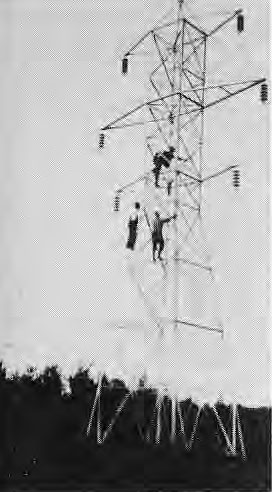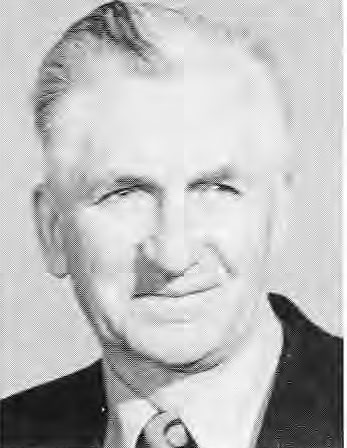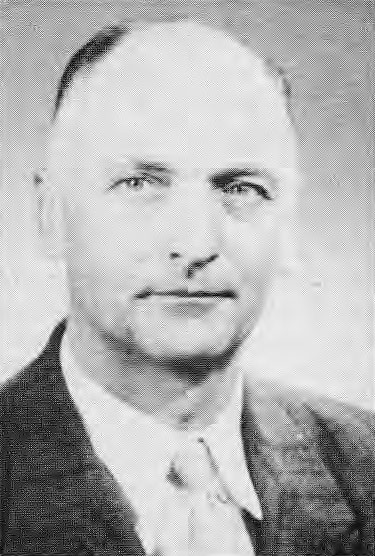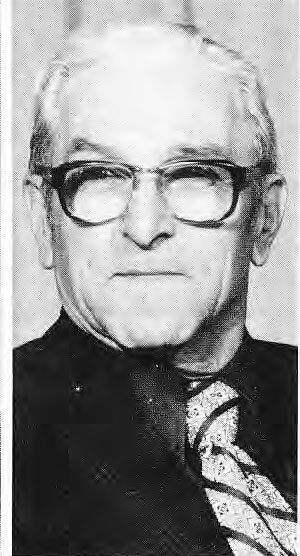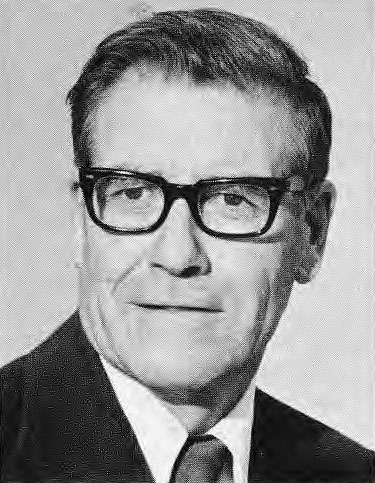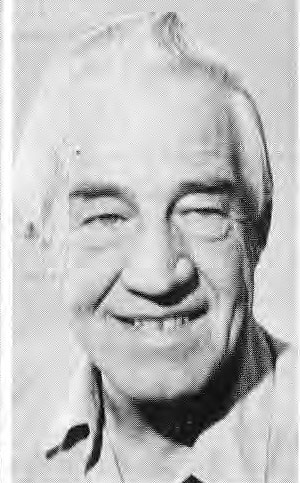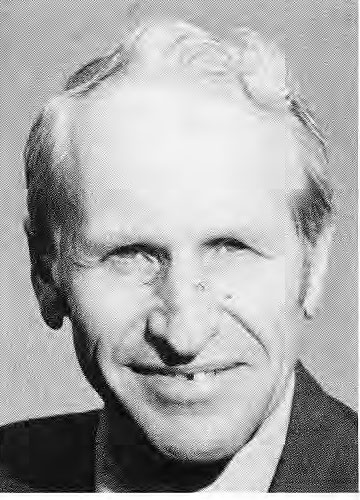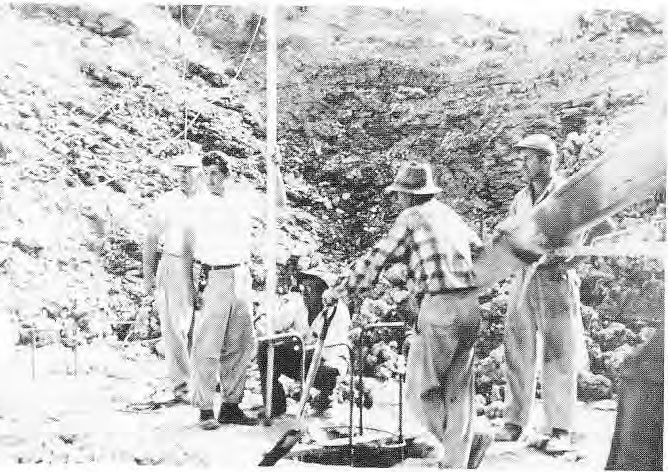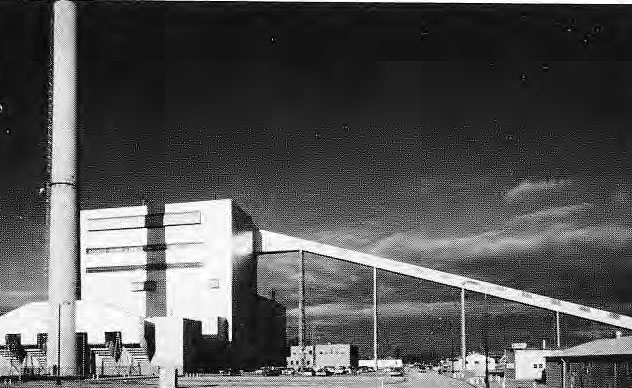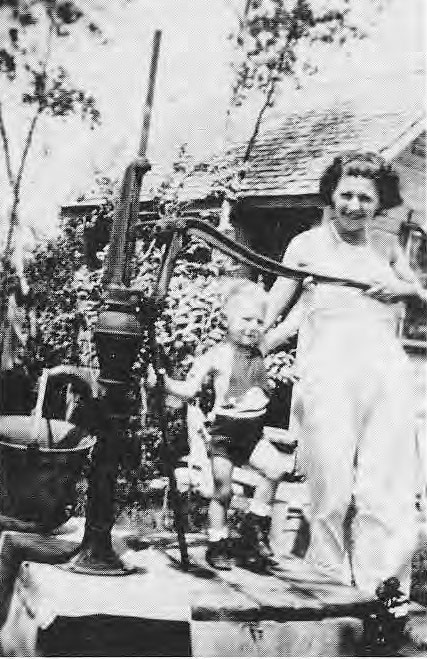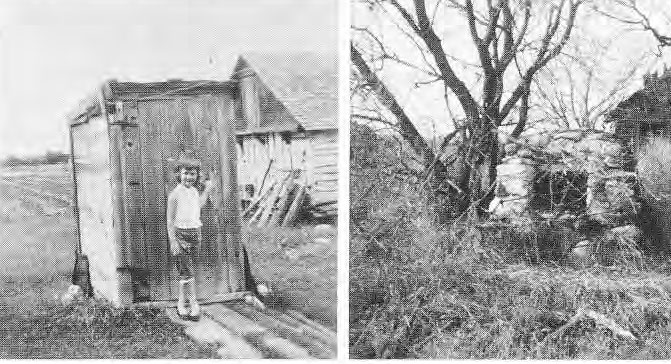The first appearance of electric lights in our area would be only what we could see across the Red River, within the Town of Selkirk, dating back to 1891. They didn’t throw much light, but because they were spaced at intersections along Eveline Street, they were a welcome sight to those across the river. Then when the old steam railway (W.S. & L.W. Railway) electrified its 2l mile line in 1908, the town started seriously to map out a civic service and systematically squeezed the privately owned Selkirk Electric Light Company out of business. In 1911, power from the Winnipeg, Selkirk, and Lake Winnipeg Railway Co. was turned into the Town of Selkirk Municipal system and by early 1912, the new town street lighting units were in operation.
The east side of the river, within the Rural Municipality of St. Clements, could have had power at this time, had they been able to afford it, or if they had ever seriously campaigned for it.
The Tyndall Quarries were being supplied by the Winnipeg Municipal system from a Substation situated at Sadlo. This Substation was also supplying the Town of Beausejour. By l9l8 the Substation had 3-300 kw transformers and a step down voltage from 66,000 V. to 12,000 V. at 3 ph.60 cy. Meanwhile, at the Quarry substation was 3-200 kw. transformers with another step down from the 12,000 V. to the 500 V. with a connected load of 600 kw and the demand in l9l8 of some 400 kw. The energy needed for the Town of Beausejour was transmitted almost 8 miles from the Sadlo Stn. at 12,000 V.
ln Beausejour they already had, by 1918, 400 (cp) lamps or street lights in town. Selkirk by l9l8 could boast of about 80 cp tungsten lamps and another 300 nitro lamps.
The municipality of St. Andrews was receiving power from the Winnipeg, Selkirk and Lake Winnipeg Railway. This company, which was controlled by the Winnipeg Electric Co., it should be mentioned, distributed electrical power only incidental to its main function which was the operation of the electrical railway running about 22 miles between Winnipeg and the Town of Selkirk. The electric railway had 22 miles of wooden poles strung along the west side of the river and transmitted power from the Transcona Sub. Stn. of the Winnipeg Electric Co., to the Mapleton Sub Str. at about 66,000 V Then, 34 miles of wooden pole lines transmitted plover from Transcona to Stonewall, Middle church, and finally Selkirk at 13,200 V. The distribution system built totaled about 64 l/2 miles of wooden pole lines in the municipalities served. The rates for lighting were 8 cents per kwhr. with a minimum charge of $ 1.00 per month. St. Clements did negotiate with the Winnipeg Electric Co. and its subsidiaries such as the Winnipeg, Selkirk and Lake Winnipeg Railway as well as the Manitoba Power Co. on several occasions. However, the cost of obtaining power and light from the electric railway, upon investigation, as early as 1923, was found to be a costly project. The municipality would have to stand the cost of constructing the main line at about $600.00 per mile. The negotiations were dropped as council felt the people on the east side, many of them newcomers by this time, could ill afford this costly service. what we needed was industrial concerns to help shoulder the initial expense of bringing in a line. In all fairness we should mention that Mr. Sangster representing the Van Horne Farm interests did make a fairly strong appeal for power and the VHF were willing to pay their fair share. At one point in 1923 the Elec. Rlwy. Co. discussed the possibility of extending the power line in order to furnish power and light to the Village of East Selkirk and the adjoining sub divisions, providing the municipality and the Van Horne Farms would share the cost. However, it was found that the municipalities share would have been in excess of $12,000.00. Council carefully discussed this possibility from all angles and they finally decided that “the financial burden would be more than the ratepayerscould stand.” Finally, it was dropped without even submitting a by-law to the residents of the day.
Then, early in 1928, Mr. Sutherland of the Man. Power Co. appeared before council wanting permission to run a line along Henderson Hwy. from the Lockport Bridge to Lot 132, thence on to Clarke’s Gravel Pit. The Company thought they should have exclusive franchise, be exempt from taxation and in return they would supply the people living along the route with light and power at 8 cents per kwhr. The Reeve (Geo. Frank) thought it was “too big a question to settle without some serious thought” and Council appointed a committee to go into the matter.
Then in April of 1928 Council passed a resolution which stated:
“That in the matter of granting the Winnipeg Elec. Co. the right of placing their poles on the municipal roads that this council is strongly opposed to granting them that privilege and that they must purchase their own right-of-way. ”
The reason council had passed their resolution was the strong protest by petition by the ratepayers from the south end of the municipality against the company wanting a Bonus of $450.00 per annum for 20 years. This had been hashed out during two public meetings of the residents. When council met during the regular monthly meeting of April, the vote to allow, the electrical company into the municipality resulted in a tie with Councilors McNeill, Martin and Hoffman voting in favor of allowing the company to run their line on the roads in 314m order to take power to the Gravel Pit without giving service to the people. Councilors Kosowicz, Gudg and lsbister voted against allowing them to come in. The Reeve was placed in the difficult position of a tie vote and stated he was personally in favor of allowing them to come in, but in face of the strong opposition, he would have to cast his vote against allowing them in.
The Winnipeg Elec. Co. asked for a meeting the next day and expressed surprise at Council’s decision of disallowance. Alter a lengthy and heated exchange the Company said that in lieu of the franchise and $450 per annum Bonus for 20 years, they would be willing to come in, serve the people along the route (providing 50% subscribed) at a rate of 8 cents with a $1.50 monthly minimum.
In view of the companies agreement to drop the Bonus, Councilor Hoffman served notice that he would repeal the earlier resolution of disallowance and a special
meeting was called for Friday afternoon April 13, 1928 for the purpose of considering Councilor Hoffman’s notice of motion and to “further go into the matter of allowing the Winnipeg Elec. Rlwy to run their lines on the Municipal Roads.”
All the members were present and the former resolution was repealed with only the ward One Councilor still voting against it.
The new resolution was worded “That the WS & LW Rlwy be given permission to use the highways of this municipality for the purpose of constructing a power line from Little Britain to the “Clark Gravel Pit” subject to the arrangement being entered into with reference thereto between the Municipality and the Company Solicitors.” The Solicitors met and came to some type of satisfactory agreement because by May 1, 1928, Bylaw No. 370 was drawn up authorizing the electric company “t0 erect and maintain an electric transmission line to CLarkes Pit. ”
The CIL plant located just south of East Selkirk in 1929 received hook-up and It was the servicing of this industrial operation that made it feasible for future municipal power lines in the south end of the municipality.
It was in 1938, in December just before Christmas, when electric lights really went on for the first time in the Rural Municipality of St. Clements. A line was extended to the communities of East St. Paul, Gonor, Narol, Lockport, East Selkirk and Garson. The electrical energy was tapped off a 33,000 volt power line serving the CIL operation near East Selkirk. A new substation was built southwest of East Selkirk where the voltage was stepped down for distribution to the communities. (This substation was recently salvaged and replaced by a larger facility south of East Selkirk.)
Prior to the end of World War II the average farmer’s life for the most part was one of arduous labor that began at four in the morning and ended lo … milking cows, loading grain, pitching hay, pumping water … with the result that productivity was low and returns were small in relation to the hours of hard-work that went into operating a farm.
The rural homemaker fared no better as she cooked and baked over the searing heat of a wood stove; hauled buckets of water from the well and worked the grime out of the coveralls by hand on a scrubbing board. Whatever romantic notions and nostalgia maybe attached to the “good old days”, hard physical drudgery was a way of life for mort farmers.
Since the era of the kerosene lamp, farm life has undergone a complete revolution. And the major force behind the revolution was farm electrification.
By 1938, there were few, if any, farm extensions. in fact, farm electrification in Manitoba didn’t really get off the ground until 1945, even though the concept of bringing the benefits of electricity to all Manitobans had been nurtured as early as 1919.
In 1919, that was the year when the provincial government formed the Manitoba Power Commission for the purpose of distributing power in bulk to rural municipalities requesting electrical service. The Power Commission owned and operated its own transmission system and purchased the power from City Hydro in Winnipeg, and later, from the Winnipeg Elec. Company.
During the 1920’s there were several rural municipalities plus a mere handful of farmers who had signed up for electrical service. Then came the financial disaster of 1929 and subsequent depression, and progress on electrification of the province slowed right down.
Power lines reached into the rural municipality of St. Clements at a time when the Power Commission was making an all-out effort to expand its service throughout rural Manitoba. The program was just starting to go well. Then, World War Il broke out, and the electrification program was once again curtailed, this time by material shortages which lasted for the duration of the war.
The war, on the other hand, also brought about such a shortage of manpower on the farm that by 1942 farmers were not just asking for but petitioning the provincial government for electrical service.
The result was the formation of the “Manitoba Farm Electrification Enquiry Commission” which recommended a full-scale effort to bring electricity to all Manitoba farmers. At war’s end in 1945 the plan got underway with a test project and by 1947 farm electrifications was in full swing.
St. Clements Municipality didn’t see Power Commission crews until around early 1950 with construction of a 3-phase 12,000 volt line extension going north from East Selkirk to Libau. There, first power was turned on in December 1950 followed by Poplar Park in March 1951.
Meanwhile, under construction going north along Highway 12 from Beausejour was a 33,000 volt transmission line from which distribution tapoffs would take electricity to the farm and resort communities along Lake Winnipeg. The system took about four years to complete. Thalberg; Beaconia and Gull Lake *’ere first to receive electrical service from this source in August 1952. In March 1953 Grand Marais and Grand Beach (May, 1953) were connected and, from a new substation at the junction of Highways 59 and ll, a distribution line was extended to Victoria Beach in April 1954.
A 3-phase extension from a substation near Gull Lake was constructed in 1955 to bring service into the Broken head lndian Reserve (Aug. 1955) at Scanterbury. Two more beach areas received electricity When Patricia Beach (Stoney Point) was reached in November 1955 and Balsam Bay in November 1956.
The coming of electricity to St. Clements in the late 30’s sadly brought with it two tragedies which many of our senior citizens may yet remember. Herman Wenzel was the first Hydro district supervisor to operate what was then known as the East Selkirk District. Scarcely a year later in June, 1939 Herman was electrocuted while checking line clearance on a transformer pole.
Immediately following Herman’s death, Bob lngram was sent to relieve at East Selkirk. Less than three month later, on Sept. 10, 1939, he too was electrocuted while working at the East Selkirk substation.
Because of Hydro boundary and district changes a complete chronology of Hydro men who have served the communities in St. Clements would be intricate. From the earlier years people will recall Clarence Chamberlain who worked out of East Selkirk from late 1939 until late 1940 and Bob Henderson from 1940to 1950.
And there have been others. like Emmanuel Dunn, Elden Leoppky, Ralph (Pat) Patterson, Rollie Cameron, Ernie Mallard, to name a few — men who have helped to keep the lights on in the Rural Municipality of St. Clements.
SELKIRK GENERATING STATION
The Selkirk Generating Station is the second largest thermal-electric generating station in Manitoba. lt is located on the east side of the Red River, adjacent to East Selkirk, about 40 km (24 miles) from Winnipeg. It has a thermal capacity of some 132,000 kilowatts while its was turbines generate about 25,000ku. The construction was started on May 23, 195’7 and it was officially opened on Oct. 19, 1960 by the Hon. Duff Roblin, then premier of Manitoba. The General contractor was person Construction of Winnipeg while the consultants were the Ewbank Partners of Toronto. The 2 wells drilled on the site are over 73m or 240 feet deep and supply the necessary water for domestic and bearing cooling purposes as well for the boilers. The 2 Gas Turbines are manufactured by Brown-Boveri with a capacity of 12,500 kw per unit. The plant has 7 transformers and its stack measures about 76 m in height or over 250 feet.
When the Selkirk station is generating at full capacity about 144,000 gallons of water is pumped per minute from the Red River, screened, passed through the condensors and discharged into Cooks Creek. From the two deep wells on site, water is pumped at various rates up to 450 gallons per minute to be used in the boilers and for bearing cooling and domestic purposes.
Sediments and sludge resulting from the various filtering and treatment processes are sluiced to the “Ash Lagoon”. As a precautionary measure against caustic or acid like substances reaching the Ash Lagoon and eventually the river, all waste materials are neutralized with lime before being discharged from the station. The waste materials are sluiced to the lagoon by a nine-inch jet propulsion system capable of handling 120 tons of ash per hour.
It is interesting to note that the power generated at the Selkirk Plant is transmitted over 29 miles of double circuit steel tower line to the St. Vital Terminal Station which is in turn connected to the Transcona and Harrow Terminal Stations. From these switching stations, the power generated at Selkirk may be transmitted to any part of Manitoba Hydro System.
To complete the story we have added a photograph of the old Alexander Butler Rowley home which occupied a corner of the property that became the site of the Selkirk Generating Station. The home remained there, by agreement with Manitoba Hydro, for as long as it was occupied by the elderly owner, Mrs. A.B. (Margaret Anne) Rowley, who passed away on Dec. 3, 1962.
HISTORY OF NATURAL GAS IN THE RURAL MUNICIPALITY OF ST. CLEMENTS
Submitted by Joe Smolinski
Natural gas transmission lines were first installed through the Rural Municipality of St. Clements in 1964, to serve the town of Selkirk. The arrival of the Selkirk transmission Iine made natural gas available in the southern part of the municipality and in the summer of 1967, the natural gas distribution main was installed along Henderson Highway from the southern boundary of St. Clements, north to Lockport.
In 1972, Greater Winnipeg Gas Company extended its franchise to the Rural Municipality of Broken head to service the communities of Garson, Tyndall and Beausejour, which resulted in the extension of the transmission line through the northern portion of the Rural Municipality of St. Clements, and allowed condensers and discharged into Cooks Creek. From the two deep wells on site, water is pumped at various rates up to 450 gallons per minute to be used in the boilers and for bearing cooling and domestic purposes. Sediments and sludge resulting from he company to extend its distribution system to parts of East Selkirk, namely Henderson Highway, Coleville Road and Quarry Road.
ln 1979, customers along Strathcona Road requested gas service, and the mains were installed to service that area.
One year later, in 1980, the line on Henderson Highway was extended from Lockport Road, north to serve many customers along that section, as well as some customers along Clark and Nanton Roads.
During the 14-year period, 1967 to 1981, the company has connected a total of 449 customers in the Rural Municipality of St. Clements. Included in this total is the Red River Brick and Tile plant located on Highway No. 44, east of Lockport.
As the area expands, the company looks forward to serving more customers in the municipality.
